Bundaberg

Lochmarin
Sat 6 Aug 2016 21:31
24:45.617S 152:23.3E  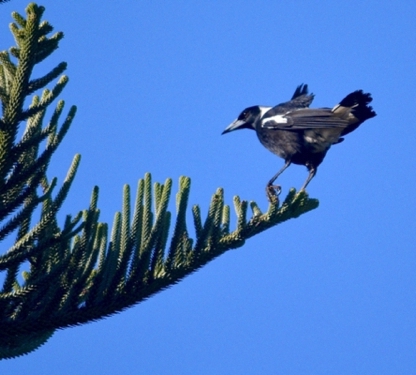 These raucous, but also often melodious, relatives of the Butcher Birds have delighted us since we arrived in Australia. They were one of the first birds we encountered as the owner of the little cafe by the marina in Coffs Harbour had tamed one, feeding it raw minced beef every morning. They are highly intelligent and very playful and inquisitive. They are also responsible for a rather mysterious trait in the cycling community of Australia. We noticed it first in Newcastle: cyclists riding along with foot long cable ties protruding out of the top of their helmets, like a sort of mad hair style. It completely puzzled us: had they used the cable ties to attach something to the inside of their helmets and forgotten to cut off the ends? Some just had one or two, others had a dozen, some even had bits of ribbon tied to the ends of the cable ties, which streamed out in the wind behind the cyclists in a jaunty manner. There’s a wonderful cycle path that runs right through the marina here, continuing for 8km or more along the coast, through parks and woodland and alongside coastline that alternates between black volcanic stepping stones and white sand where turtles nest. One day we got chatting to one of the other cyclists on the path and couldn’t ignore the peculiar headgear any longer: we had to ask. They were anti-magpie defence systems. During the mating season the magpies get rather defensive of their territory and see cyclists as threats, silently dive bombing them from behind. They are good sized birds, about a foot tall, with a strong sharp beak and can do significant damage. Our acquaintance described being hit next to his temple, just under his helmet, with the beak going in “to the bone”, then having to cycle home with blood streaming down his face. If it helps avoid that sort of damage looking like a numpty is a small price to pay. 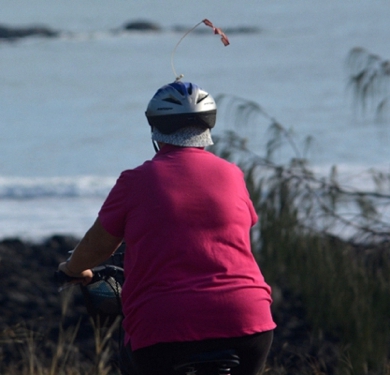 The sugar cane fields spread across the red brown fertile flood plains, interspersed with the occasional field of cherry tomatoes, sweet potatoes or strawberries. The houses are mostly all of a kind, standing on stilts they catch the cooling breezes on the balconies. 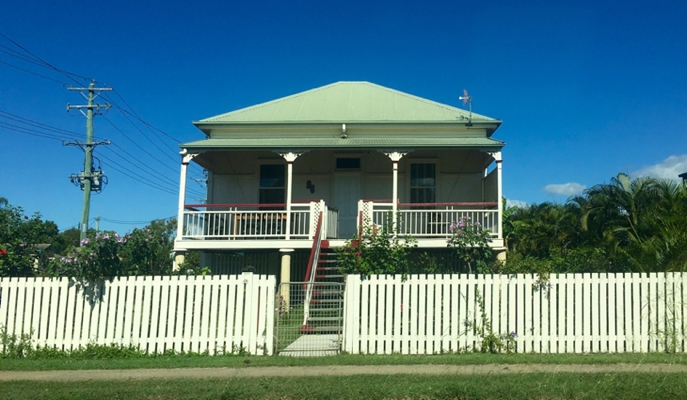 The only other way of getting high enough to see the view over the sugar cane (which grow up to 12 feet) is to visit a local landmark - The Hummock. This is the remains of an extinct volcano, towering an astounding 96m above sea level and allowing one to see out to Fraser Island and for miles inshore. Apparently it’s a favourite spot for locals to watch the light show when thunderstorms roll their way across the levels. I bet its a magnet for skateboarders too. 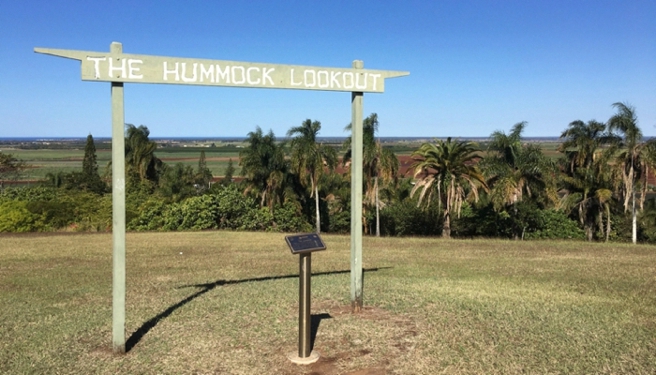 It’s a good job that the houses are on stilts because the flood plain lives up to it’s name from time to time. Back in 2013 the flooding was so bad that it washed away the town marina. The water rose so high that the whole pontoon rose up and floated off the top of the piles, with the boats still attached, sending them spinning along the river at 60 miles an hour. The damage to homes, businesses and agriculture was horrendous. We were planning to sail up as far as Mackay, leave Lochmarin in the marina there and return to the UK for a month or so before setting off from Australia to continue our circumnavigation. We had an excellent reason for our trip back: the arrival of our beautiful little Granddaughter Bella! Having arrived in Bundaberg we realised that we really didn’t need to go further North. The Marina is friendly, inexpensive and it’s easy to provision with bus trips into town and to the market. A mile and a half up the road is Burnett Heads, a small town with supermarket, bakery, post office, cafe with wonderful coffee and an amazing collection of parks. We’ve never come across a place with so many public spaces, some of which are huge. I swear there’s twice the area of public space to private, and every blade of grass is mown and trimmed and kept clear from litter. It also has the attraction of a local mob of kangaroo, seen lounging in the fields or sometimes in the park alongside the river. 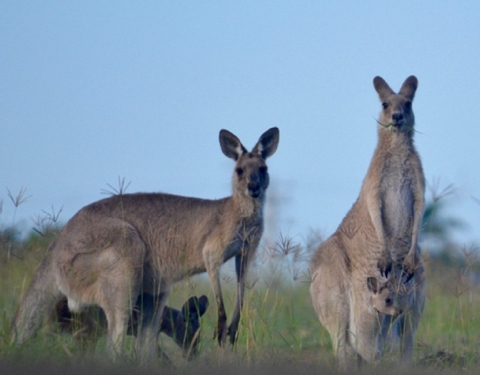  So we stayed put, got Lochmarin as ready for the onward voyage as we could and then left her confident that the marina staff would care for her whilst we had the privilege of being around for Bella’s first two weeks of life. As always when we decide to stay put for a while we set out to get to know the natives and the local attractions. We were lucky: it was the week of Bundaberg Fair. We were surprised to find it was going to be on a Wednesday to Friday, even though it was term time. When would the kids be able to come? The answer was simple: They closed the schools and local businesses on the Thursday, so everyone could come to enjoy the show. You couldn’t have it on a weekend, they explained, as everyone goes fishing. It was lovely, rather like an English County Show but with a touch of rodeo and poisonous snake show thrown in. The "must have” traditional food was a Dagwod Dog, a sausage on a stick covered with cornmeal batter. Our prize for the most unusual stall was the one containing historic electric fence machines, there must have been 100 different types, all reputed to be working. 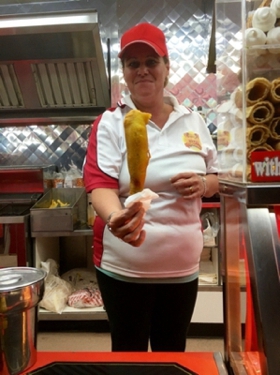  But more seriously, we were aware that as we’ve travelled in Australia we’ve found it hard to get in touch with the Indigenous population. In New Zealand the Maori culture is easy to access, running parallel to and intertwined with the Pakehas. Here in Australia, apart from a couple of Aboriginals body painted with white patterns and dancing at Circular Quay to sell didgeridoos to tourist and a couple of references to past Aboriginal use of land on signs, we’d found the whole Indigenous culture was hidden from view. We’d asked about it and just been told we’d find more Aboriginals further North. We were further North and we’d still not found them. I’d read in the paper some shocking news about teachers having to be airlifted out from an Aboriginal settlement as there were concerns for their safety. What had gone so wrong with a community that the very people who were trying to give them the skills to better their situation where at risk from violence? Then a chance meeting one morning as I went for a run gave us an opportunity to connect a little. I got chatting to a lady taking photographs and it turned out that she was filming some stop frame animation for an Indigenous Film Festival. The festival would be showing a selection of films from a project with local Indigenous young people, giving them a voice for what was important in their lives and their sense of place. It would also show some short films from a professional film maker, all taken around Bundaberg. The event had special significance in a town which has only been flying the Aboriginal flag for the last year or so - the last Mayor refused to fly it. Indeed, folk who were featured in some of the filming could remember the days when Aboriginals were not even allowed into the cinema, let alone being able to show films they’d made. It was a terrific evening and gave us the opportunity of meeting two special people who welcomed us into their hearts: Roger and Chrissie Saunders. As is always the case, what makes places special to us is the friendship and generosity of the folk we meet. The Saunders couldn’t have done more to welcome us and help us out but they have also been able to give us a lasting memento of our time in Australia. Roger is a dual heritage artist, specialising in Aboriginal art, and having seen his work we asked him to paint us a picture - a perfect way to remember this land of wonderful wildlife and untamed open spaces.  "The Rainbow Serpent” - the origin of the creatures and landscape of Australia. With thanks to Chrissie for the picture. |